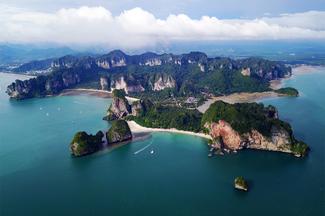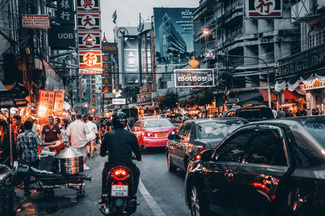SALA KAEW KU – NONG KHAI’S FANTASTICAL HINDU-BUDDHIST PARK
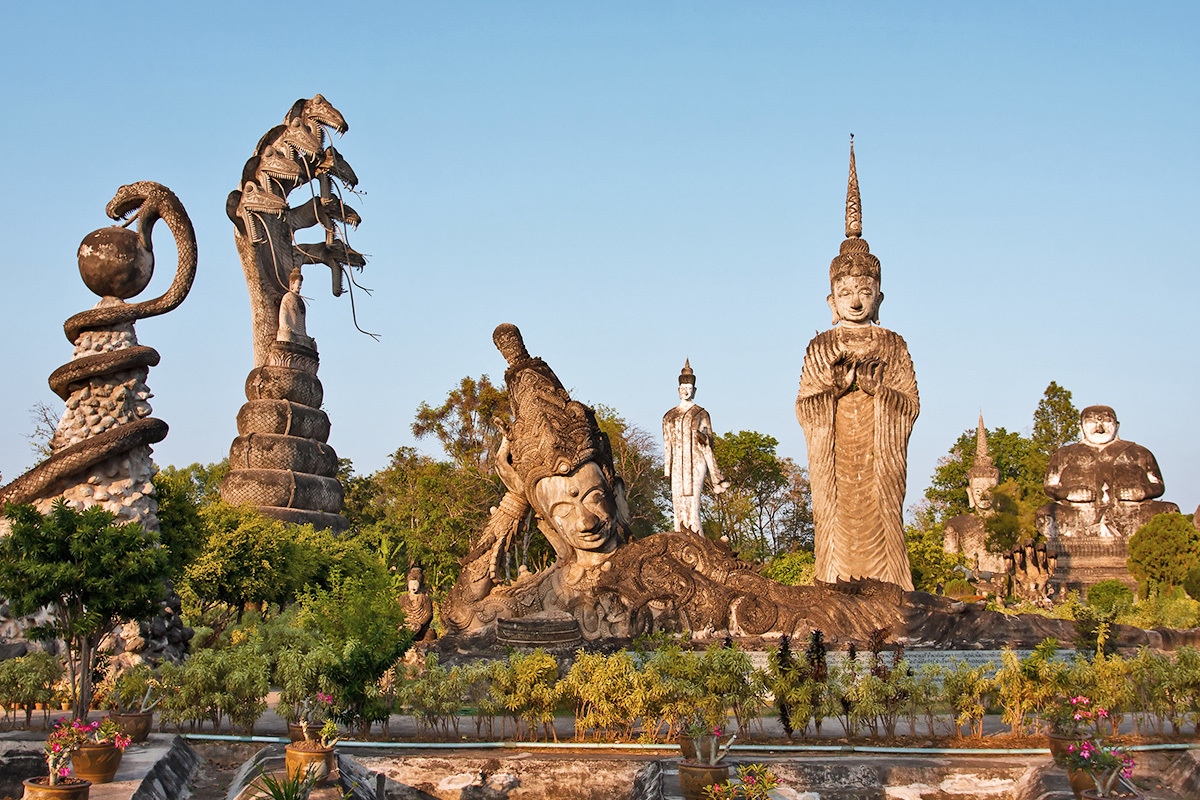
Nong Khai is about 626 kilometres north of Bangkok. It is the road and railway gateway to Laos's capital, Vientiane. Here you will find one of the most unusual sites in Thailand to visit, Sala Kaew Ku, the work of one Bunleua Sulilat, sometimes referred to as Luang Pu Bunleua Sulilat, a Thai/Lao mystic, cult leader, and sculptor.
Born in Nong Khai in 1932, Bunleua Sulilat, the seventh child of a family of eight children, received his calling after he fell into a cave as a young man and met a hermit by the name of Khaew Ku, who became his spiritual mentor. After his time with Khaew Ku, Sulilat embarked on a career as a sculptor of religious statuary.
In 1958 he began his first monumental sculptures in concrete, a blend of Buddhist and Hindu styles, at the Buddha Park near Vientiane, in Laos. When the communist revolution of 1975 brought about a dramatic change in the political and cultural life of Laos, Sulilat fled to Thailand, where in 1978 he began work on his new project, the Sala Khaew Ku, the Hall of Khaew Ku.
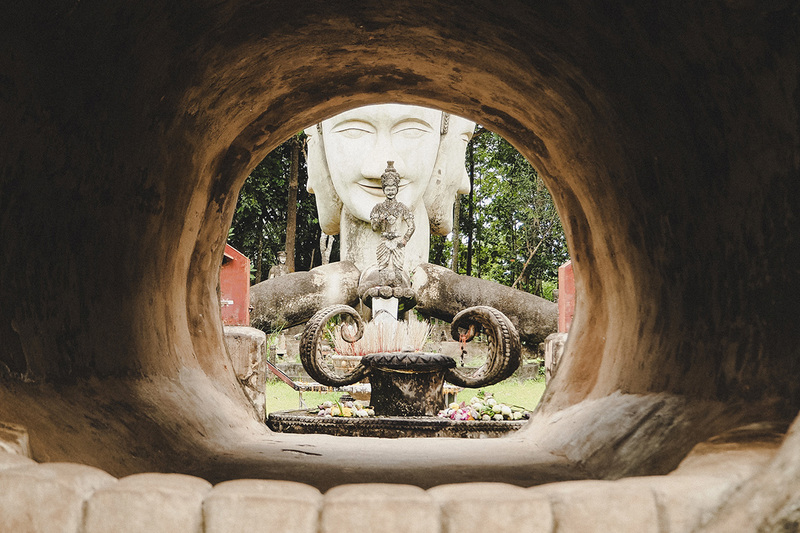
Imagination run riot at Nong Khai
With no formal training in art of sculpture Sulilat’s style may be considered naïve and his monumental sculptures were largely erected by unskilled volunteers in concrete, all of which was donated by his enthusiastic supporters, attracted by his syncretic blend of Buddhist and Hindu beliefs and his charismatic and eccentric personality.
The Sala Khaew Ku became the headquarters of a religious cult, led by Sulilat, who strictly speaking was not a religious figure but nevertheless was accorded the title of Luang Pu, usually reserved for monks. Though popular among the residents of the area there were a number of people who thought Sulilat insane.
Sulilat suffered serious injury when he fell from one of his giant sculptures and his health declined rapidly, supposedly as the result of a disease of the blood. He died in 1996 and his body lies today preserved and mummified in a shrine located on the third floor of the Sala Khaew pavillion.
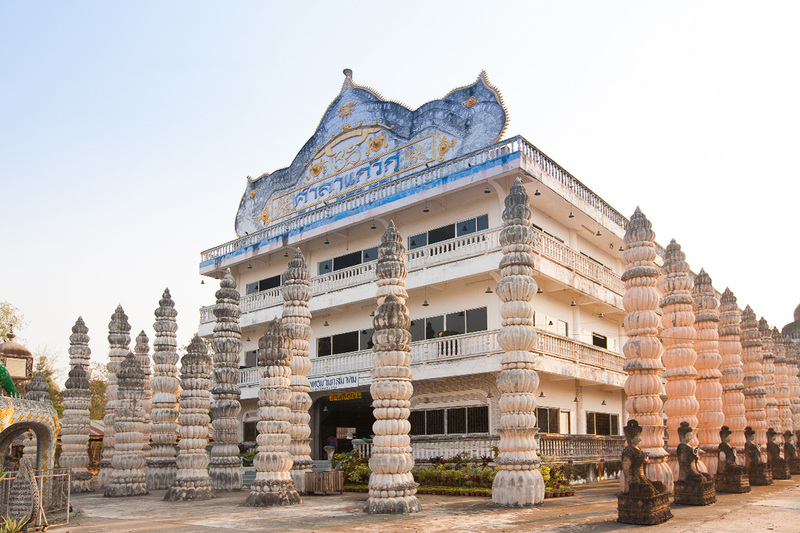
The pavilion at Sala Khaew Ku
The pavillion itself is three-storey building made of concrete, with domes resembling those of a mosque, and was built after Sulilat’s death but according to plans he laid down earlier.
The park itself features a striking collection of giant concrete sculptures, over a hundred, based on Hindu and Buddhist iconography, and although similar to Sulilat’s Buddha Park in Laos, the size and scale of the statues, some over 25 metres in height, makes the Nong Khai Park appear a great deal more extravagant and fantastical.
One of the more intriguing features of the park is the Wheel of Life, a group of sculptures representing the karmic cycle of life, through birth till death, using tarot-style imagery, which culminates in a statue stepping over a fence around the compound to become a Buddha figure on the other side.
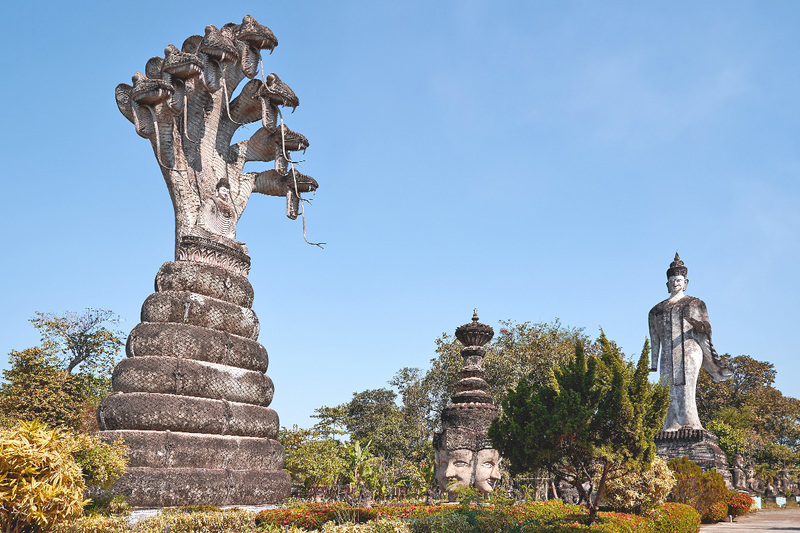
Striking imagery to inspire and meditate upon
A particularly distinctive structure is a depiction of the Buddha, deep in meditation, under the protective care of the seven headed Naga, a serpent. This image of the Buddha is popular in the region and with Sulilat’s decidedly naturalistic representation of the Naga this makes for a striking and bold artform.
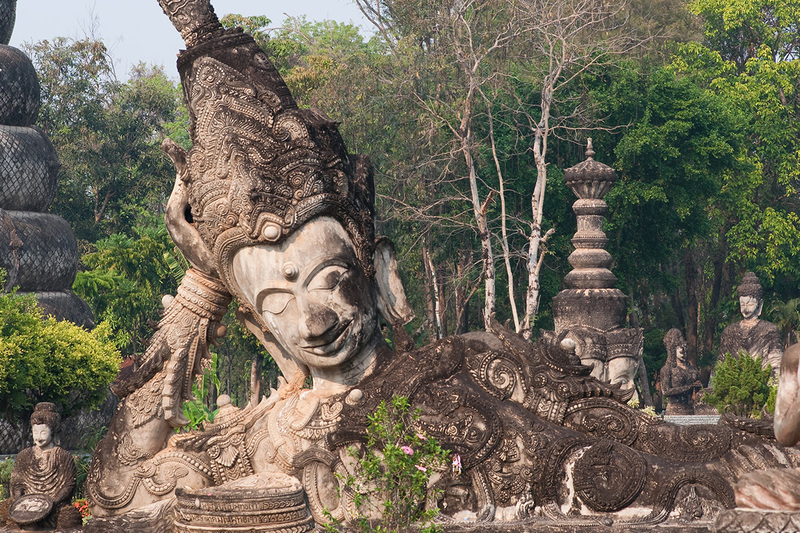
A very chilled out reclining Buddha
The park represents the extraordinary, unusual and odd oeuvre of a man driven to realize his dream, which today offers a thought-provoking journey into one man’s vision and passion for his art. It is highly individualistic and reflects the personal beliefs of a man of his culture and time, yet which seems to strike a chord with local residents and visiting tourists alike.
The park is about 15-20 minutes away by tuk-tuk, but arrange for the driver to wait and take you back after an agreed time as finding a tuk-tuk for the return journey may prove difficult.










of collaborative energy




Before proceeding to use the website please carefully ready our Terms and Policies
I accept Diwerent's Terms and Conditions and Privacy Policy










